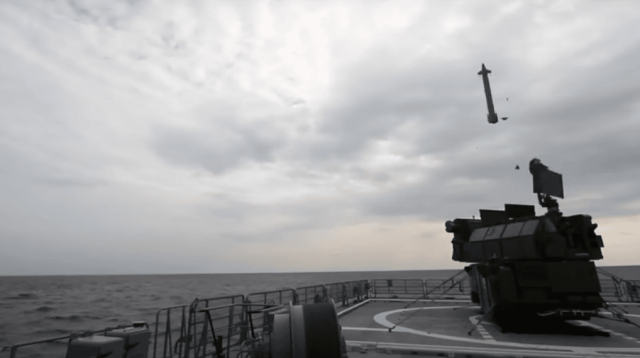The Russian Navy urgently puts on its ships a system designed for operations on land. The reason for this was the latest combat experience. He showed that the main threats to warships are not at all those that were previously considered, and the existing naval air defenses against them are not always suitable. The new air defense cruise missiles do not intercept, and it is not too good against Bayraktar-type drones. It seems that the fleet will be able to protect itself this time. But only to the Russian one: NATO countries have a completely different fate in this sense. Naked Science will try to figure out what all this means for the future of wars at sea.
Military equipment develops according to its own laws — and they do not always look rational from the outside. On the contrary, there is a frequent situation of "there is no prophet in his homeland": inventors and designers of a country have long ago proposed reasonable solutions that close weaknesses in its armament… But none of this got into the series.
There are plenty of examples of this. It was Russia that was the first in the world (since 1874) to convert its warships to fuel oil, which sharply reduced their mass — this, in turn, allowed them to be armed much stronger than enemy ships. But this was done only with the Caspian flotilla for obvious reasons: it was closest to the sources of fuel oil. The naval authorities did not have enough understanding of the importance of this innovation, because the rest of the Russian fleets switched to liquid fuel only after the British, and they were honored to do it already in the XX century.
"There is no prophet in his fatherland" is not only a Russian problem. Rudolf Diesel was a German, but the first diesel ship was built in 1903. The Russian Empire, and Germany — only in 1911. In World War II, German tanks still drove on gasoline, spending from 330 liters per 100 kilometers against 160 liters from a comparable diesel T-34 (even though it was heavier due to its greater armor).
The Third Reich experienced a severe fuel crisis throughout the war. And the German tanks had such insufficient mileage at one gas station that on the most massive of them, the Px.IV in 1944, an additional gas tank was put in place of the thrown-out electric rotation drive of the tower (yes, the tower had to be turned manually), but the invention of Diesel on the tanks of his homeland still took root with difficulty.
And after all, there was no shortage of talented engineers in Germany: for example, Ferdinand Porsche worked hard on a diesel engine for a tank, but nothing came of it. The Maybach concern has not been able to convince during the entire war that the army needs diesels, and not super-greedy "gasolines".
Something similar, unfortunately, happened with the Russian fleet. Fortunately, not only with Russian.
How missiles revolutionized the war at sea and how the military believed in its end
In August 1943, the German Do-217E-5 for the first time used against ships what would now be called a cruise missile, the Henschel Hs 293. Many prefer to call it a "guided bomb", but in reality this bomb cannot hit the target due to a sheer drop on the target: it could only be launched from a distance, as a cruise missile, which, in fact, it is.
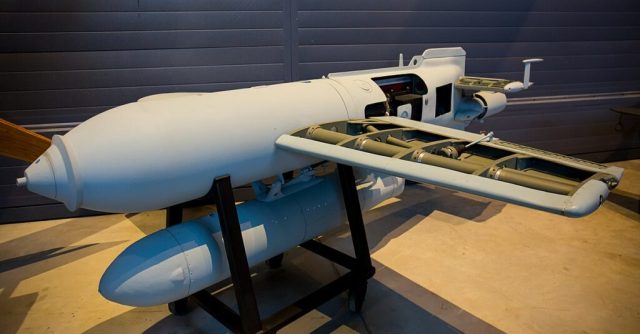
The layout of the Henschel Hs 293. It is often called a planning bomb, which, however, is very doubtful. And the presence of a liquid rocket engine (from below), and large wings indicate that we have a primitive cruise missile in front of us. The mass of the warhead is 295 kilograms, the entire structure is just over a ton. In total, the Germans released more than a thousand of them, but most of them when there was no chance of their full-fledged use
Image source: Wikimedia Commons
She sank the warship Egret, killing 198 people. For a while it seemed that the Germans had created a miracle weapon. The sinking of Allied ships continued, in November of the same year, one such novelty sank a troop transport with 1,138 Allied servicemen.
However, British developers soon created a means of electronic warfare — the Type 650 transmitter. Its use since the spring of 1944 made the work of Hs 293 (he was guided by radio command) almost impossible. It seemed so easy to the Allies that after the war they did not even try to reproduce the German development. No cruise missiles were thought to be made in NATO countries until the 1960s.
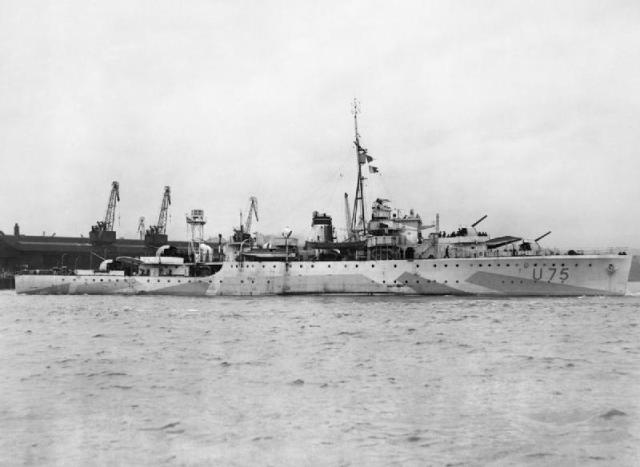
The British escort ship Egret, first sunk by a cruise missile, on August 25, 1943. At the same time, 198 people on board were killed
Image source: Wikimedia Commons
A quarter of a century later, history repeated itself. The USSR did not miss the German experience and created radically more effective anti—ship missiles that already acted like modern ones - with a homing head, flying at low altitude, which made it difficult to intercept them. On October 21, 1967, the crews of a pair of Egyptian boats (Soviet-built, Komar type) fired four Termite anti-ship missiles at the Israeli destroyer Eilat, which lost 47 people killed and sank. It seemed that the USSR had opened a new page in the history of the war at sea.
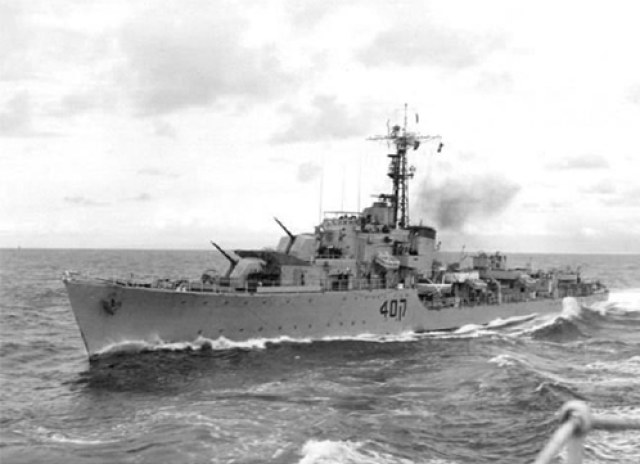
Destroyer "Eilat"
Image source: Wikimedia Commons
However, then it turned out the same as with the Henschel Hs 293 — with the only difference that Israel also put the PKR into service. Taking into account the lesson learned, the Israelis quickly created their own small but fast missile boats, and — attention — equipped them with electronic warfare (EW), repeating the trajectory of the British in the forties. In October 1973, in the Yom Kippur War, a naval battle took place at Latakia. In it, the Israeli navy sank several enemy ships with missiles, but did not receive any losses — either its electronic warfare system blinded the homing heads of "Termites", or those conceived for large NATO ships simply could not reliably keep small Israeli boats "in the grip". Of the 54 Termites released by the Arabs, none hit the target.
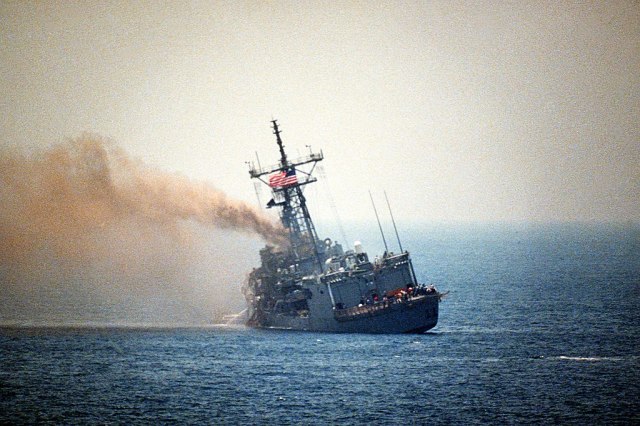
Frigate "Stark" after being hit by a pair of light Exocet anti-aircraft missiles of French production. The ship's radars did not notice both missiles, although there was no noticeable excitement at sea, and the trajectory of the missiles was in the area covered by the MK 92 CAS radar. One of the missiles did not explode, but the explosion of the second was enough for the electronics of the American ship to fail (as a result, the Iraqi pilot went unpunished). As observers noted, if the sea was rough, the ship would have been lost
Image source: Wikimedia Commons
At this moment, there was some euphoria in the fleets of the developed countries of the world: too quick and easy removal of the "missile threat" for surface ships gave rise to a serious underestimation of such a threat. And even the sinking of the destroyer Sheffield in the Falklands War by an Argentine cruise missile did not change these sentiments. As well as the death of 37 American sailors on the frigate "Stark", attacked by two Iraqi PKR. It was believed that the British simply "overslept" the arrival of the PKR, and with an active electronic warfare system and shipboard air defense, it is quite possible to fight off a cruise missile.
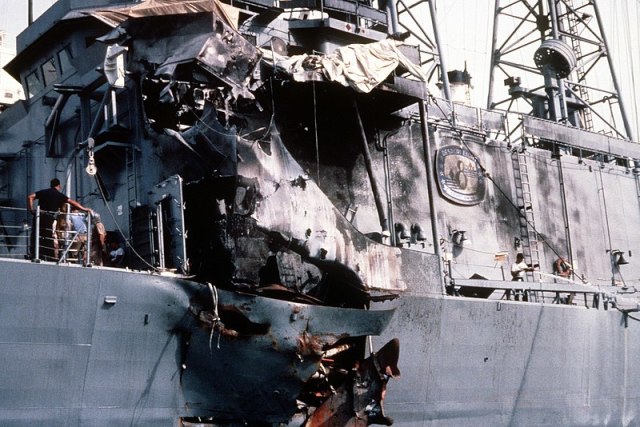
Traces of Exocet hitting Stark
Image source: Wikimedia Commons
It seemed that the subsequent attacks by "Exocets" in the Falklands War also spoke about this. On May 25, 1982, an attempt to attack the aircraft carrier "Hermes" ended in a virtual failure: dipole reflectors were shot into the air on the aircraft carrier, and the missiles disoriented by them were aimed at the Atlantic Conveyor ship without reflectors (military transport of 15 thousand tons), which was drowned. On May 30, the Invincible aircraft carrier was attacked in a similar way — and again the dipole reflectors deceived the anti-ship missiles, and they fell into the sea.
Unnoticed evolution
The sailors rejoiced early. They overlooked two important points that together made a real revolution in the field of warfare at sea. Firstly, the new generation of RCC has learned to fly at 2-5 meters above sea level in the final section of the trajectory. This means that it has become very difficult to notice them at a distance of more than 6 thousand meters (at such a distance, the curvature of the Earth plus wave crests make it difficult to detect the rocket). In fact, in those cases when the British detected them, they did it not by means of their radars, but by detecting radar radiation from the homing head of the "Exocets".
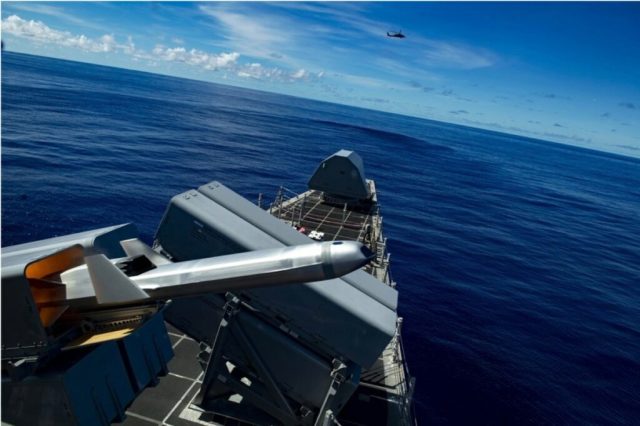 Asia Times articles "Moscow" could have been sunk by a Norwegian missile"">
Asia Times articles "Moscow" could have been sunk by a Norwegian missile"">
Norwegian cruise missile NSM, today the best example of anti-ship cruise missiles outside of Russia. Photo from the Asia Times article "Moscow" could have been sunk by a Norwegian missile"
Image Source: US Navy
Secondly - and this is even more important, in the following years, rocket builders finally brought passive homing (NSM cruise missile) to mind. It could also be deceived by shooting off heat traps instead of dipole radio reflectors. One problem is that such heads no longer revealed themselves by radar radiation. So, they did not inform the attacked ship, "here I am, shoot the traps." These missiles flew up to the ship suddenly, and if the ship's radars were not good enough, then the ship's air defense had no chance to repel the attack.
But there is also a "third": hypersonic cruise missiles (despite the extremely small size of their "wings") of the "Zircon" type, with active maneuvering in all phases of flights. However, their methods of attacking the target, for all their effectiveness, are sharply different from conventional cruise missiles. In addition, except for Russia, at the moment no one has such missiles in service, and they are unlikely to appear in the near future, which is why "thirdly" it makes no sense to discuss within the framework of this article.
However, until now, these two factors (not to mention the third) have been practically ignored by the main fleets of the world. There was an opinion (and the most conservative sailors still adhere to it today) that the bulk of cruise missiles could be knocked off course by radio interference, and the few RCC that broke through would successfully shoot down shipboard air defense systems.
Ukrainian experience: ships without the most modern air defense no longer make sense
The year 2022 changed everything. The possible defeat of the cruiser Moskva by an anti—ship missile - despite the presence of the S—300 and the Wasp on it, as well as electronic warfare systems - showed that the evolution of cruise missiles did not stand still at all.
Their new models, such as the Norwegian NSM or a variant of the Russian X-35 with thermal imaging homing, do not use radar to aim at the target, so it becomes extremely difficult to detect them, especially when the sea is rough. Due to this, the RCC can attack the ship even before it uses both air defense and electronic means of suppression.
Note that this was clear in advance. The two French Exocet AM.39 missile defense systems, with which the Iraqi aircraft mistakenly struck the American frigate Stark in 1987, differed fundamentally only in that they were also with active radar guidance, that is, they were more noticeable than those missiles that could attack Moscow. But it's difficult to learn from other people's mistakes: it's no secret that many in the domestic fleet believed that the Americans simply "slammed" the Iraqi attack, that it was a human factor, and not that light PKRS can be difficult to notice at all.
It turned out that something had to be done urgently. The option of using the "Shell" type air defense systems by ships suggested itself. Unlike the Wasp, they have, in addition to the centimeter-range radar, also a millimeter-range radar, as well as an optical-location target tracking system. Due to the new generation of radars, the "Shells" see targets with an effective scattering area of 2 square centimeters. This means that even the Norwegian anti-ship cruise missile NSM, made of composite materials just to reduce radio visibility, is quite distinguishable for the "Shell".
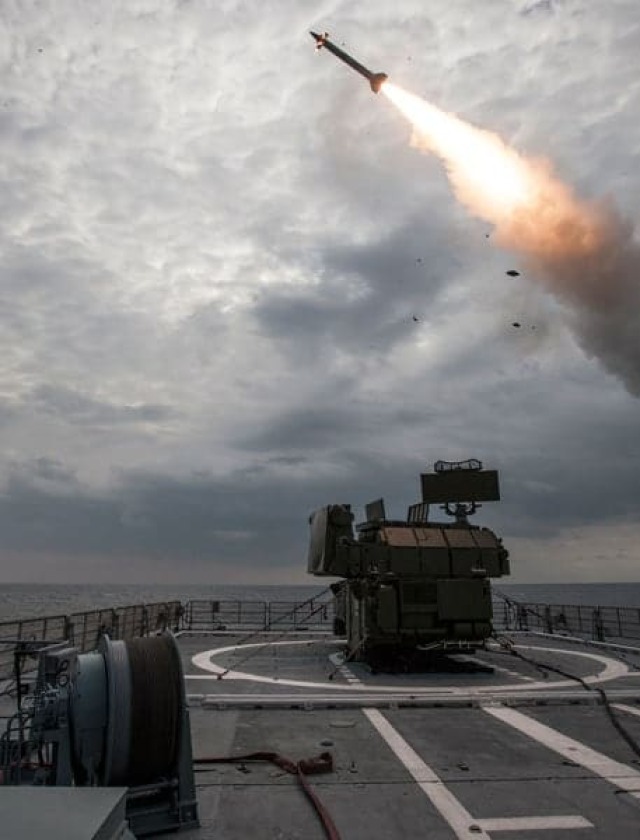
Even before the installation of the "Shell" in 2017, a version of the "Tor" without landing gear was installed on the deck of the Russian frigate Admiral Grigorovich. Then he successfully hit the target simulator "Harpoon"
Image source: Wikimedia Commons
The capabilities of the system in this regard were clearly confirmed back in 2020, when the land "Shell" was driven onto the deck of a large missile boat of the Black Sea Fleet "Shuya". Then he was given an even more difficult task than NSM: the ZRPC needed to shoot down the Kornet missile. This is a short-range anti-tank product, too light to sink a ship with one hit (but it can damage). But the Cornet is much smaller and much less radio-visible than a conventional anti-ship missile. He also did not use radar homing, that is, he did not give himself away to the target ship in any way. The height of the missile was chosen at 1-3 meters above the crests of the waves, slightly less than even the NSM or the Russian X-35 (3-5 meters).
Despite all this, the "Shell" coped. The light missile was shot down, and the ground air defense showed that it worked perfectly from the deck of the ship. But in peacetime, conclusions were not drawn from this. Russia has launched a special military operation without having "Shells" on active ships of the Black Sea Fleet.
Almost immediately after the death of the "Moscow" in April 2022, the situation changed dramatically. Satellite images of the surroundings of Zmeiny Island (near Odessa) they began to show that there are Russian warships there, on the deck of which there are "Shells". And yesterday there were photos of Russian corvettes of project 22 160 in the exclusive economic zone of Romania at the Uran and Ana offshore platforms. On one of the ships is placed "Tor-M2".
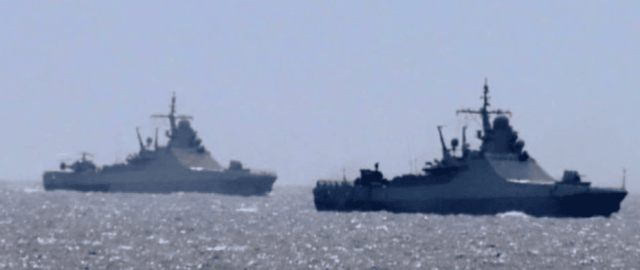
Two Russian ships in the exclusive economic zone of Romania. Officially, such corvettes are called patrol ships of project 22160. Their total displacement is 1800 tons, the main armament is eight "Calibers". The ship, located on the left, carries a Ka-29 helicopter on the deck, and the other is a Tor—M2 land-based air defense system. Attention is drawn to the small distance between the ships: this is probably done so that one "Thor" could cover them both from cruise missiles
Image source: Wikimedia Commons
In general, judging by the success of ground air defense, even mass attacks fail with the presence of cover for cruise missiles. In April 2018, a coalition of Western countries struck Syria with 105 cruise missiles. Only 22 of them achieved the goals: 80% did not complete their tasks for one reason or another. At least 46 of them were hit by Russian and Soviet-made air defenses.
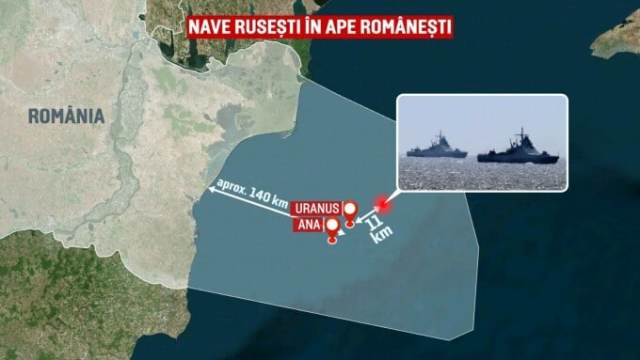
The place where the ships were spotted is less than a cannon shot away from two Romanian oil platforms
Image source: Wikimedia Commons
This example, as well as the very presence of Russian ships at the Snake (they are clearly distinguishable on satellite images) shows that if you use the latest generation of air defense systems, it is quite possible to cope with the threat of cruise missiles. Of course, taking into account the incomplete integration of land complexes on ships, so far this will require their movement in small groups (so that a neighbor in the group covers from the dead zones), but, nevertheless, this is quite realistic.
Let's go back to the photos of the Black Sea Fleet corvettes, on the deck of which there are "Thors". Why "Torah"? Why not the same "Shells"?
How to choose a land air defense for a naval ship
At first glance, this is a really difficult question. The firing range of the "Shell" is 20 kilometers, that of the "Tor" is only 16 kilometers. The altitude is also lower: 12 kilometers against 15 at the "Shell". The radar of most "Torus" is also somewhat less sensitive to small-sized targets (the effective scattering area below 5 square centimeters is already a problem for it). In addition, closer than one kilometer, a purely missile "Tor" can no longer hit the enemy: missiles need a noticeable distance to it in order to be able to successfully target and work out.
The Pantsir, unlike the Tor, has two double-barreled guns with a total rate of fire of 4000-5000 rounds per minute. Yes, it is difficult for him to work against small drones 3-4 kilometers away (however, this applies to any cannon anti-aircraft complex). However, a cruise missile is not a tiny drone. And the dead zone for missiles begins at 1000 meters from the protected ship: it is clear that at such a distance, the probability of hitting an anti-ship missile and a cannon will be relatively decent. It seems that the lack of guns on the "Thor" is no less a problem than its range, which is 20% inferior to the range of the "Shell".
"Shell" during the firing range. Although its guns do not always cope with the defeat of small drones further than 1.2 kilometers, the area of cruise missiles is many times larger than that of drones, so it is noticeably easier for the cannon of the complex to work with them
Image source: Wikimedia Commons
Finally, the experience of the combat use of the "Shells" first in Syria, and then in Ukraine, looks more impressive than that of the "Thor". As of April 4, 2022, only one car of the Pantsir complex in the zone of a special military operation has already shot down seven planes and one helicopter. As far as we know, Thor had no such examples at that time.
But with a careful look, it becomes clear that the choice of "Thor" as the protection of naval ships is still more logical. There are no cruise missiles with an effective scattering area below 5 square centimeters yet. The altitude is several kilometers less for protection against foreign anti-ship cruise missiles does not matter. After all, those, unlike the Russian ones, do not know how to attack from above, they still do not fly above tens of meters.
The range of 4 kilometers less is also insignificant. Firstly, there is almost no chance of noticing a low-flying cruise missile 20 kilometers away anyway. Secondly, the zone of confident destruction of cruise missiles in the first, basic modification of the "Shell" is only 12 kilometers, and this is for relatively outdated Tomahawk-type samples. In fact, the same is true for the "Tor" (for him, the confident defeat of such goals also does not come from the limit of 16 kilometers).
A long range and a ceiling would be important in the fight against slow-flying drones of the Bayraktar type: here the "Shell" will clearly cope with a longer distance than the "Tor". But Bayraktar has nothing with which to attack Russian ships from 16-20 kilometers: it does not have enough long-range missiles. Therefore, in fact, for the ship's needs, "Thor" in this sense is no worse.
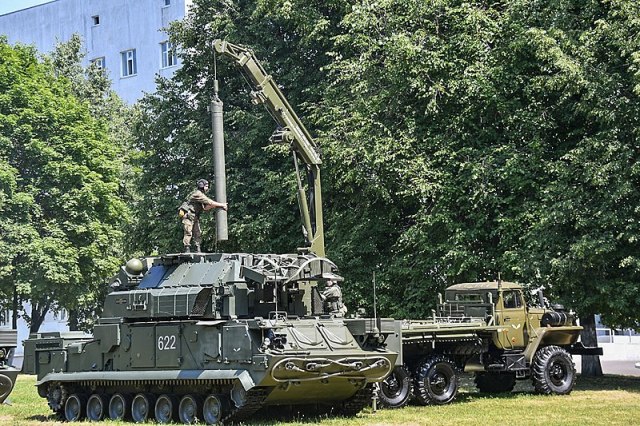
The Pantsir rocket in the transport and launch container (TPC) weighs 94 kilograms. But the "Thor" has 163 kilograms, which was its noticeable disadvantage on land
Image source: Wikimedia Commons
But the "Tor" has an advantage: it carries 16 missiles, not 12, like the "Shell". He also has a more stable (which is important in the sea) platform. Finally, its missiles are more "energy-armed". On land, this is often more of a problem: they are heavier and larger than the "Shell". However, in the context of the fight against such a cruise missile as the Norwegian NSM — and she is able to maneuver on the final section of the route to avoid shipboard air defense — a large power-to-weight ratio, at least in theory, means a serious increase in the chances of shooting down a target missile.
What should be the ideal naval air defense system of the future?
Yes, the presence of Russian warships with land-based "Shells" and "Tori" on the deck next to the Snake still allows them to do without new losses, despite the arrival of American Harpoon anti-ship missiles in Ukraine. The island and its surroundings are within the reach of the Western PKR, and there are no new ship sinkings there, it is obvious that the "non-Maritime" complexes turned out to be quite effective.
We have already explained above why it turned out that improvised (land) air defense systems were put on the ships of the Russian fleet in a hurry, and why they did not receive special marine versions at the factory. But this story raises other questions. In particular, this: will there be enough such improvisations in the future?
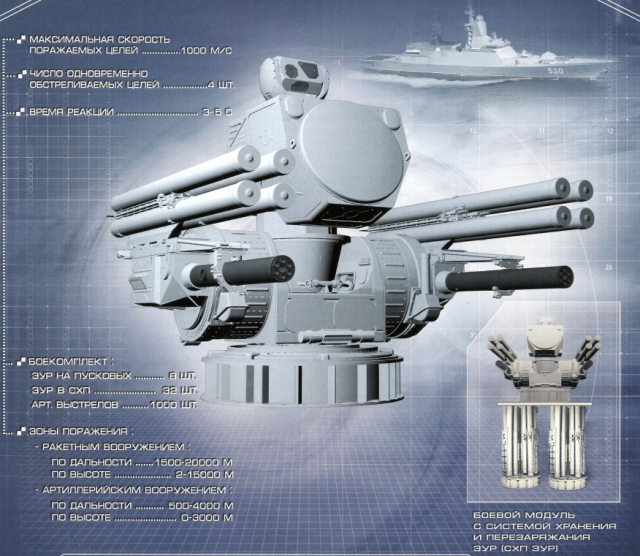
The marine version of the "Shell" already exists. However, is it optimal in everything? Yes, the stock of 40 missiles looks very good, but only eight of them are ready for use at the same time, and the PKR fly so fast that there may not be time to recharge. In addition, the dead zone, closer to which its anti-aircraft missiles will not provide interception of the enemy's PKR, is one and a half kilometers here, noticeably more than that of the Tor. The marine version does not yet have hypersonic missiles from the Pantsir-SM, which is why its range is no more than 20 kilometers, not 40. And there are doubts about the choice of a gun to defeat the enemy's PKR in the near zone
Image source: Wikimedia Commons
It seems unlikely. Let 's think about it: The "Thor" on the deck of the ship works completely autonomously. His own radar is his only "eyes". So, in the direction of the nose of the ship, he is practically blind: the radar does not "see" through the superstructure. This can be solved by installing a radar on the superstructure, and the missile launcher is placed separately in the lower parts of the ship. Obviously, this should be done for the future "native" naval air defense.
In addition, the self—propelled installation "Tora" weighs 32 tons, and most of them are chassis, which, on the deck of the ship, are just ballast. Having a normal deck installation of the same size as the entire self-propelled gun, you can dispose of the ship's space and load capacity much more rationally.
A significant drawback of the land—based "Torus" is a dead zone of 1 kilometer. Closer to this milestone, the missile will not have time to work on the target, and after all, the last kilometer is about one—sixth of the time that the ship's air defense confidently sees a really modern (that is, really low-flying) cruise missile. It is clear that a cannon is needed for the last kilometer. But is it the same as the "Shell"? This is doubtful.
Yes. it is much more rapid-firing than its Western counterparts. Yes, the total performance of two twin-barreled 30-millimeter guns there is equal to 80 rounds per second. But the PKR flies the last kilometer for about 3.5 seconds. To meet them, "anti-missile" guns need a rate of fire of more than 80 per second. It seems the most reasonable choice would be something like a pair of Soviet GSH-6-23M .
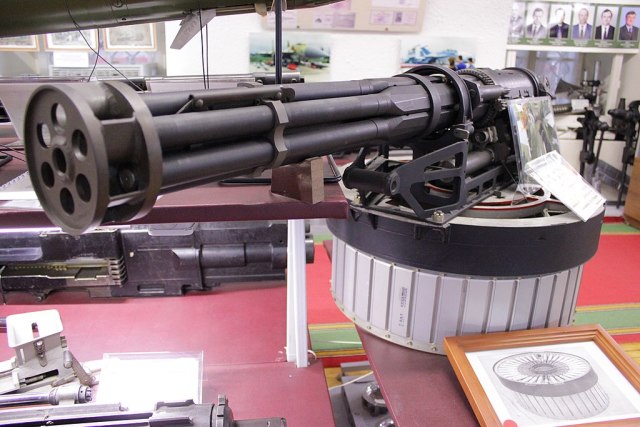
The GS-6-23 weighs 76 kilograms, which is 16 kilograms lighter than the M61 Vulcan, a 20-millimeter analog of the Soviet cannon. If the M61 gives only 100 shots per second (and in the ship's version of Phalanx CIWS, against the PKR — only 75 shots per second), then the GSH-6-23M — 165 shots per second
Image source: Wikimedia Commons
Its armor-piercing projectile of 200 grams will penetrate even the titanium shell of the winged Norwegian NSM. But the rate of fire due to the smaller caliber and very successful design, it has the highest in the history of mankind — > 165 rounds per second per gun. A pair of these (instead of a pair of 30-millimeter ones at the "Shell") It will fire 330 rounds per second, four times more than the Shell guns. Even at the last kilometer, such an installation will be able to issue a thousand shots at the course of an enemy cruise missile. Which will dramatically increase the chances of its interception in the most dangerous area, where the rocket, due to too short a distance, no longer helps.
Finally, all is not well with the rocket part of the "Tor". 16 of its missiles are absolutely not enough for a war against a serious enemy. Yes, Ukraine has problems with anti-ship missile carriers. Yes, it will not launch 40 of them at once for one goal. But it's no secret that Russia was not building a fleet for operations in Ukraine. He has a completely different main opponent — NATO.
The Russian Su-34 carries eight X-35 anti-ship missiles with a range of 260 kilometers. It is obvious that NATO may well have aircraft carrying eight PKR each. If two of them make a launch on a Russian corvette with a "Thor" — he may still be at the limit of his capabilities, but fight back. And what will happen if there are three aircraft with a PKR, and 24 missiles will participate in the attack? What if these are not American "Harpoons", but really dangerous NSM with passive homing that does not reveal itself? It is useless to put radio interference on such a rocket. And "Thor" will not be able to shoot down 24 of them: he himself has one and a half times less anti-missiles.
The problem is not only in the number of missiles, but also in the number of control channels. The air defense system can simultaneously fire at as many enemy objects as it has control channels. Thor has only four of them, which is logical: up to Abkaika was no longer needed on land. At sea, the number of control channels should be higher. Moreover: the ideal ship's air defense will be the one that has hypersonic missiles (faster than Mach 5 numbers ), like the "Shell-SM". They are about twice as fast as Thor missiles. This means that they will have time to hit twice as many enemy cruise missiles with the same number of control channels.
It is absolutely clear that now, before receiving complexes with a large number of hypersonic missiles, the air defense of almost all modern naval ships will not be able to repel a serious attack simultaneously by dozens of cruise missiles. However, you need to learn how to do this, otherwise surface ships will suffer the fate of battleships in World War II. That is, they will be expensive, incur heavy losses in people, but they will not be able to decide the outcome of naval battles.
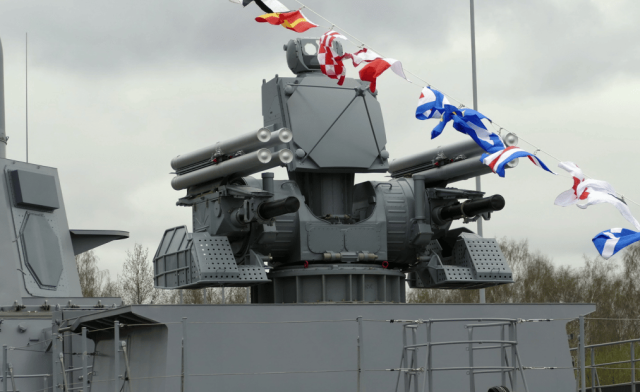
"Pantsir-M", installed on board the corvette "Shkval" project 22800 (a ship with a total displacement of 870 tons). The main armament of the "Squall" is eight "Calibers". Unfortunately, most of our Pantsir-M corvettes are not equipped with
Image source: A.V. Karpenko
In the coastal seas, it will be unthinkable for them to compete with airplanes: one Su-34 costs tens of millions of dollars, its eight PKR — several million more. But even a small corvette costs hundreds of millions of dollars. And it carries anti—ship missiles - if the design is successful — a maximum of eight. Most of our corvettes carry four of them, and many American ships of the same size (LCS) — until recently, zero at all. This happened because fleets around the world were clearly not paying enough attention to cruise missiles.
It turns out that the aircraft in its current form is cheaper than the ship, but much faster than it, and at the same time carries no less, or even more RCC. In order to preserve its combat value in coastal seas against its background, the ship needs something that the aircraft simply cannot afford. For example, effective and numerous air defense systems (there is simply no place for them on an aircraft).
A Russian-built corvette with a displacement of 1,000 tons may well carry not 16 missiles for the "Torus" or "Shell-CM" (with a total weight of less than 3 tons), but several dozen of them (with a total weight of up to a dozen tons). This is quite logical (and has already been done for the marine version of the "Shell", carrying 40 missiles). On land, after all, "Tori" alone are also rarely used — when covering serious targets, we are more often talking about pairs and fours of such machines, which have 32 or 64 missiles in total.
A ship of even a thousand tons displacement is a goal no less serious than the one that two or four "Thors" cover on land. So, he and the "umbrella" should be put no smaller. Will we have to squeeze out the rest of the systems of Russian corvettes and frigates? Sure. But it's better to be left without a 76-millimeter cannon (when was the last time at least one warship was sunk?) than to drown because your cover from the PKR turned out to be weaker than that of an ordinary army unit on the march.
Of course, in order to use dozens of hypersonic missiles, the ship's air defense will need not four guidance channels, like the "Thor" or "Shell" land, but at least twice as much. But all these are quite solvable tasks. Moreover, if they are not solved, the use of surface ships in the range of the enemy's RCC will inevitably turn into the same slaughter as attempts to use battleships in the range of enemy aircraft carriers in World War II.
It seems that the fleet simply has no other choice but to create a "Thor" for itself, several times more powerful than a land one.
